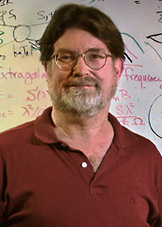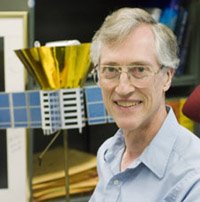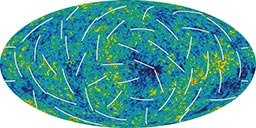Physics Nobel 2006: Mather & Smoot
 George F Smoot
George F SmootJohn C Mather and George F Smoot have been jointly awarded the 2006 Nobel Prize in physics for their discovery of the blackbody form and anisotropy of the cosmic microwave background radiation. John C. Mather is a Senior Astrophysicist at NASA's Goddard Space Flight Center and George F Smoot is Physics Professor at University of California at Berkeley.
Their work looks back into the infancy of the Universe and attempts to gain some understanding of the origin of galaxies and stars. Their work is based on measurements made with the help of the COBE satellite launched by the NASA on November 18, 1989. The COBE results provided increased support for the Big Bang scenario for the origin of the Universe. The measurements also marked the inception of cosmology as a precise science. It was not long before it was followed up, for instance by the WMAP satellite, which yielded even clearer images of the background radiation. Soon, the European Planck satellite will be launched in order to study the radiation in even greater detail.
 John C Mather
John C MatherAccording to the Big Bang scenario, the cosmic microwave background radiation is a relic of the earliest phase of the Universe. Immediately after the big bang itself, the Universe can be compared to a glowing body emitting radiation in which the distribution across different wavelengths depends solely on its temperature. The shape of the spectrum of this kind of radiation has a special form known as blackbody radiation. When it was emitted, the temperature of the Universe was almost 3,000 degrees Centigrade. Since then, according to the Big Bang scenario, radiation has gradually cooled as the Universe has expanded. The background radiation we can measure today corresponds to a temperature that is barely 2.7 degrees above absolute zero.
The background radiation was first measured in 1965 by Arno Penzias and Robert Woodrow Wilson with their radio antenna at Bell Telephone Laboratories. They received Nobel Prize for their work in 1978. Smooth and Mather's work led to more precise measurements of various characteristics of this radiation with COBE satellite.
 WMAP has produced a detailed picture of the infant universe. Colors indicate "warmer" (red) and "cooler" (blue) spots. The white bars show the "polarization" direction of the oldest light [Photo credit: NASA/WMAP Science Team]
WMAP has produced a detailed picture of the infant universe. Colors indicate "warmer" (red) and "cooler" (blue) spots. The white bars show the "polarization" direction of the oldest light [Photo credit: NASA/WMAP Science Team]COBE also had the task of seeking small variations of temperature in different directions (anisotropy). Extremely small differences of this kind in the temperature of the cosmic background radiation -- in the range of a hundred-thousandth of a degree -- offer an important clue to how the galaxies came into being. The variations in temperature show us how the matter in the Universe began to 'aggregate.' This was necessary if the galaxies, stars and ultimately life like us were to be able to develop. Without this mechanism, matter would have taken a completely different form, spread evenly throughout the Universe.
Further Study:
WMAP's introductory page on Cosmic Microwave background
Wikipedia page on Cosmic Microwave Background
Labels: Cosmic Background Radiation, Cosmology, Nobel Prize

0 Comments:
Post a Comment